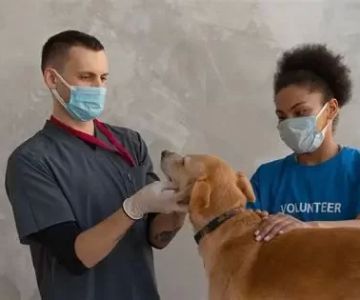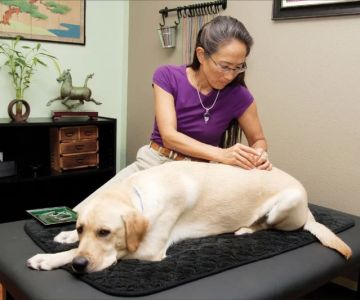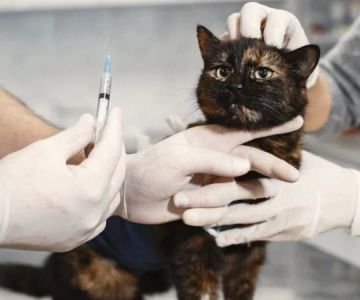- - 1. pay-snapshot-2025 — Quick salary snapshot for how much a veterinary assistant make
- - 2. pay-drivers — What actually drives veterinary assistant salary in the U.S.
- - 3. hourly-vs-annual — Hourly-to-annual math you can trust
- - 4. experience-ladder — Entry level vs. seasoned vet assistant pay
- - 5. location-examples — City-by-city examples and why they differ
- - 6. shifts-and-specialties — Nights, ER, and specialty practices
- - 7. benefits-beyond-pay — Insurance, PTO, CE, and hidden value
- - 8. raise-playbook-2025 — Concrete steps to increase how much a veterinary assistant make
- - 9. real-world-story — A short, true-to-life pay progression story
- - 10. outlook-2025 — Hiring trends and demand this year
- - 11. negotiation-mini-script — Words that work when you ask
- - 12. quick-faq — Fast answers to common salary questions
1. Quick salary snapshot for how much a veterinary assistant make
Across the United States in 2025, a typical veterinary assistant salary lands around $31,000–$41,000 per year, with many roles paying $15–$20 per hour. Highly experienced assistants in busy urban or emergency settings can reach the low-to-mid $40Ks, while rural, entry-level roles often start closer to the high $20Ks. These figures reflect advertised offers from national employers and aggregated job boards this year.
2. What actually drives veterinary assistant salary in the U.S.
2.1 Cost of living and clinic revenue
Markets with higher veterinary service rates (think large metro areas) usually post higher pay. Multi-doctor hospitals and corporate groups often offer clearer pay bands.
2.2 Skills mix and certifications
Hands-on competencies—safe restraint, dental prophy assistance, anesthesia monitoring support, and inventory control—move the needle. The Approved Veterinary Assistant (AVA) credential or state-recognized training signals you can contribute immediately, which can add $1–$2/hour in some markets.
2.3 Schedule, demand, and turnover
Evening, weekend, and holiday availability raises your value. Clinics that struggle with turnover pay more to keep dependable team members.
3. Hourly-to-annual math you can trust
Here’s simple math to translate hourly rates into annual pay for a full-time schedule (40 hrs/week, 52 weeks):
3.1 Examples
$15/hr ≈ $31,200; $18/hr ≈ $37,440; $20/hr ≈ $41,600; $22/hr ≈ $45,760. Add overtime (time-and-a-half) and shift differentials to estimate your real take-home.
4. Entry level vs. seasoned vet assistant pay
4.1 New to the field (0–1 year)
Expect $15–$17/hr as you build core skills: client communication, cleaning protocols, safe handling, and charting.
4.2 Proficient (1–3 years)
$17–$20/hr is common once you can prep for surgery, place basic bandages, assist with radiographs, and run in-house labs.
4.3 Senior/lead (3+ years)
$20–$23+hr when you can train others, coordinate inventory, assist with anesthesia monitoring, and manage busy hours smoothly.
5. City-by-city examples and why they differ
Higher ranges: Seattle, San Francisco Bay Area, Los Angeles, New York City, Boston—often $19–$23/hr thanks to higher clinic fees and living costs. Mid ranges: Dallas–Fort Worth, Denver, Minneapolis, Atlanta, Phoenix—commonly $17–$20/hr. Value markets: Midwestern and rural clinics—$15–$18/hr with lower rents and tight-knit teams.
5.1 Commuter math matters
A $1/hr difference is ~$2,000/year before taxes. Balance pay with commute time, parking, and your cost of living.
6. Nights, ER, and specialty practices
Emergency and specialty hospitals (oncology, surgery, internal medicine) usually pay premiums for nights, weekends, and holidays. If you like fast-paced medicine and don’t mind odd hours, this is the quickest path to the upper end of how much a veterinary assistant make.
7. Benefits with real dollar value
7.1 Health, dental, vision
Employer coverage can be worth $3,000–$6,000/year. Ask for the employee contribution and deductibles in writing.
7.2 PTO and CE
Ten days of paid time off equals ~4% of annual pay. Continuing education stipends ($200–$800) and paid CE days are key for progression.
7.3 Uniforms, pet care discounts, and 401(k)
Scrub allowances, discounted vaccines/meds for your pets, and retirement matches add up. Calculate the full package, not just base pay.
8. A practical raise playbook for 2025
8.1 90-day impact brief
Track three quantifiable wins (fewer missed charges, faster room turns, improved client reviews). Present them at your review.
8.2 Upskill with intention
Target one high-value skill per quarter—dental charting, anesthesia monitoring basics, or triage flow. Pair it with AVA or a state-approved program to strengthen your case.
8.3 Cross-train on revenue tasks
Become the go-to for inventory and lab machines. Clinics pay more when you protect margins and uptime.
9. Real-world pay progression story
Kayla started at a suburban clinic at $16/hr. She logged missed-charge audits and trained to assist with dentals. Six months later she presented a one-page impact brief showing $1,800/month in captured revenue and a 15-minute faster room turnover. Her raise moved to $18.25/hr, then to $20/hr after taking on inventory. Same clinic, smarter leverage.
10. Hiring trends and demand in 2025
Pet ownership remains high and access to same-day appointments drives staffing demand. Many hospitals now post clear salary bands and sign-on bonuses. That means motivated candidates can compare offers and negotiate confidently.
11. Negotiation mini-script (steal this)
“Based on my experience assisting with radiographs, dental charting, and anesthesia monitoring, plus my weekend availability, I’m targeting the $19–$21/hr range. I can also own inventory cycle counts to reduce expiries by 20% in 90 days. How close can we get to that range today?”
12. Quick FAQ about how much a veterinary assistant make
12.1 Is hourly or annual better?
Hourly is standard and can pay more with overtime. Annual is common at corporate hospitals that bundle benefits.
12.2 How fast can I move up?
With clear goals and weekend availability, many assistants move $2–$4/hr within the first year.
12.3 Do certifications really help?
Yes—especially when paired with a written plan to apply new skills on the floor.
Your next step
Ready to raise how much a veterinary assistant make this year? Build a simple portfolio (impact brief, skills checklist, certification plan) and compare offers side by side. If you want an edge, consider a career starter kit—resume templates tailored to veterinary assistants, a one-page impact-brief sample, and an interview cheat sheet. Small investment, outsized return.












